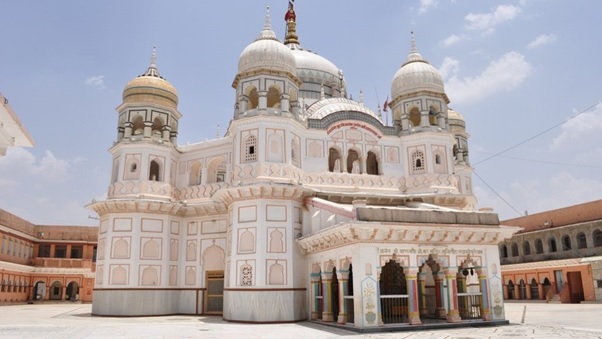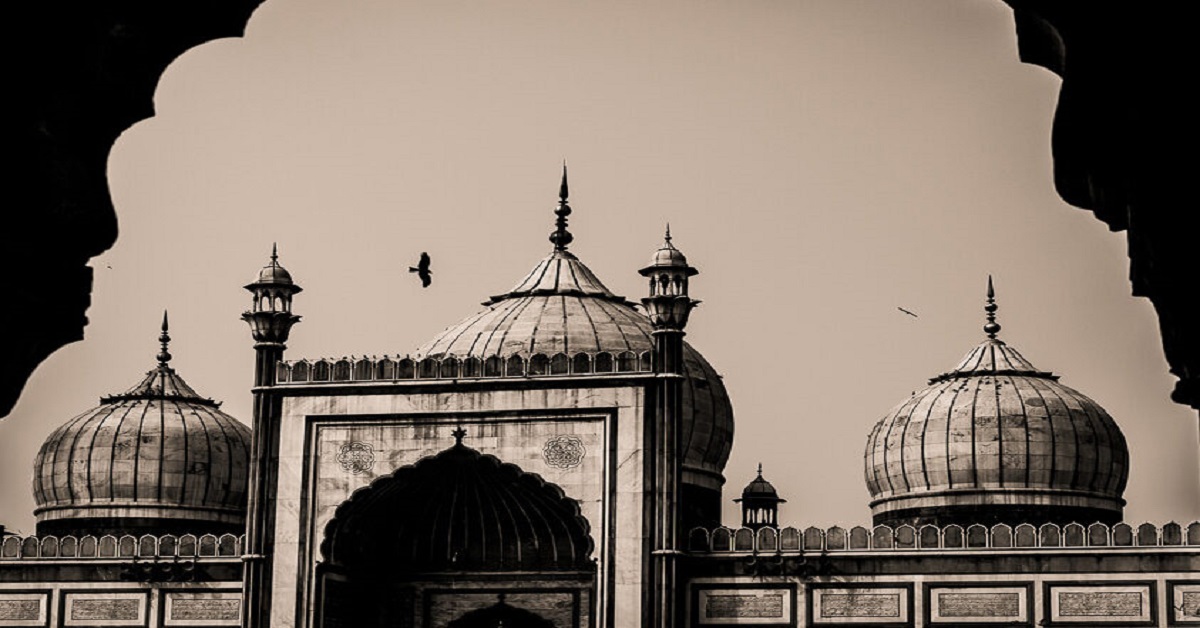At a time when places of worship, especially those of Islamic origin, are being used by politicians to polarise and militarise society further, it is crucial to understand that places of worship were always not some symbols of resistance against a monarch but are also result of patronage of such monarchs.
Particularly, there is a trend in India today to show Islamic rulers’ reign starting with the Sultanate to Mughals as an era of intolerance. This view essentially brings up the exaggerated “destruction of temples by Islamic rulers of India” and presents this as a civilisational attack on Hinduism of today. Apart from the glaring stretch of history and fact that such a view employs, it also selectively reads parts of medieval history to suit the narrative i.e., Islamic Rulers destroyed Hindu temples therefore Islamic Rulers are bad.
This view has been consistently countered with examples in History where Hindu kings raided Hindu temples and where Muslim Kings- including Aurangzeb-patronised Hindu temples. The counterview depicts the complex nature of Medieval History and the political prominence religious places harboured, therefore being the centre of attacks by rival kings.
For example, what could be the explanation for Aurangazeb issuing a farman to demarcate 330 Bighas of land to Mahant Balak Das- the priest of Chitrakoot Balaji temple if the popular narrative is that he is a destroyer of temples? The explanation is that there is more to his reign and his relationship with temples and Hindus than the age-old political narrative that has been furthered by the right wing in the country.
This is not to further such counters or expand them. This article is to present that Islamic influence on pre-Islamic era or the Hindu way of life- manifest in a magnificent culmination of architectural style that represents a meeting of cultures. Why is there a need to discuss this? It is because the era of medieval India is being painted as a grim era and nothing else. Whereas it was much more than that and it certainly was not simple enough to be put into two categories-harmonious or grim. Therefore, it is important to understand more about this era and not be carried away by the narratives that are meant to distort history and divert minds, divide people.
The tale of Dravidian Mosques
Temple architecture is divided into three categories in India- Nagara style- predominant in Northern India, Dravida Style- predominant in Southern India, Vesara Style- A hybrid of both Nagara and Dravida styles, originating in present day Karnataka.
Tamil Nadu has some Mosques which are built in Dravidian style although many were built in the 13th and 14th centuries. Referred to as Kallupallis, these were built like mandaps so that people can pray together. The only condition that was stipulated by whoever commissioned the building of a Mosque was that there should not be any sculptures in the Mosque, on the walls or pillars. Therefore, the masons who are used in constructing temples, carved flowers on the pillars etc. This condition of not carving sculptures was also present during the famed Mughal era.
As the splinters of Islamic rulers came to the Deccan in the form of Bahmanis, Qutubshahiss and others, this Dravidian style merged with the local ruler specific style, which was in turn inspired by the Islamic style.

Keezhakarai old Jumma mosque, Image source- Inmathi.com
Jalis- A feature common in Hindu and Islamic architecture
In an average Hindu household, which has a pooja box-having images and small idols of various gods, one can see that the doors are also perforated with a nice-looking design called Jali.
 Household Jaali Temple
Household Jaali Temple
Source: Woodshala.com
This usage of Jali is a continuation of the practice of ancient prayer sites of Buddhists and Hindus having Jalis to create conditions where light is allowed but also a sense of privacy is given to the congregation. This design was adapted by the Islamic rulers, when constructing Mosques or any other structures to allow light but also maintain privacy on a large scale. This large-scale adoption of Jalis in many structures, like the Hawa Mahal in Jaipur, led to the common usage that we see in day-to-day architecture in India. The Hawa Mahal, built during the rule of Sawai Pratap Singh- a Rajput ruler and designed by Ustaad Lal Chand- is an amalgamation of Indo-Islamic style of architecture. The Hawa Mahal was constructed with many Jali Walls to ensure privacy, diffused light and view.

Hawa Mahal, Jaipur. Image Source- Vijesh Vijayan, Creative Commons
Influence of Islamic Architecture on Temples
Maratha Architecture and its relationship with Islamic Architecture
There was a noted difference between the Yadava tradition of Architecture and Maratha tradition which was influenced by Islamic style for longer periods. The most prominent influence is the materials and the construction systems that were employed. While Yadava architecture was predominantly rooted in stone systems- by using coloumns and pillars to support the layers of stones rather than binding elements-Maratha era temples employed the technique of using cementing materials such as lime-an Islamic way of building temples. It was also found that the early Marathas, in their architecture borrowed from the Sultanate architecture like the Samadhi of Lakhuji Jadhav, 1630. Lakhuji Jadhav was the maternal grandfather of Chatrapathi Shivaji. However, it is important to note that Lakhuji was a Mansabdar of Mughal empire thus showing the connections between the two.
Pranami Movement and the Prannath Temple, Panna
The Prannath Temple, located in Panna, Madhya Pradesh, is an architectural marvel that reflects the synthesis of Hindu and Islamic elements. It was constructed in 1692. The temple’s design incorporates intricate carvings, domes, and arches reminiscent of Islamic architecture, while also featuring traditional Hindu elements such as ornate pillars, mandapas, and sanctums.
The fusion of these architectural styles at the Prannath Temple symbolises the inclusive philosophy of the Pranami Movement, promoting coexistence and understanding between different religious traditions. The use of domes and arches, typically associated with Islamic architecture, coexists harmoniously with the detailed carvings and sculptures inspired by Hindu art.
Despite fighting the Mughals, Maharaja Chhatrasal Bundela- a Rajput ruler who ruled Bundelkhand- was inspired by Sant Prannath who later became Maharaja’s spiritual guru. Sant Prannath spent the last 11 years of life in Panna, Bundelkhand while preaching his syncretistic religious philosophy that included Islamic tenets to a Rajput Ruler who were one of the prime opposing rulers to the then Mughal ruler Aurangzeb. It is argued that Prannath’s idea of comparative religion had practical applications as he found the crux of both Hinduism and Islam, established a common solidarity thus mitigating conflict.

Prannath Temple, Panna, Madhya Pradesh
Image Source: panna.nic.in
Conclusion
These examples indicate that there was a movement of knowledge, trade and know how between the kingdoms, irrespective of their religion. The aforementioned examples are testaments to both Hindu and Muslims adopting each other’s styles and trying to intermingle. History is neither all violence nor all peace. It is filled with pockets of violence and peace and when seen from a contemporary viewpoint, lacks abundant information. There is a need to delve deeper into the historical context of medieval India, avoiding oversimplified narratives that categorize the era as either harmonious or grim. The Pranami Movement and the architectural marvels discussed serve as poignant examples of the intricate interplay between different cultures and religions, challenging us to appreciate the rich tapestry of India’s past and resist the distortion of history for contemporary agendas.
Related:
Gyanvapi controversy manufactured for political gain?
Gyanvapi Case: Copy-Paste Pattern a la Babri Case – Not Just Legally But Politically, Too?
The SC’s decision on ASI Survey of Gyanvapi: An analysis
Gyan Vapi Masjid: Where can we go when our elders are buried here ask anguished Muslims from Varanas

